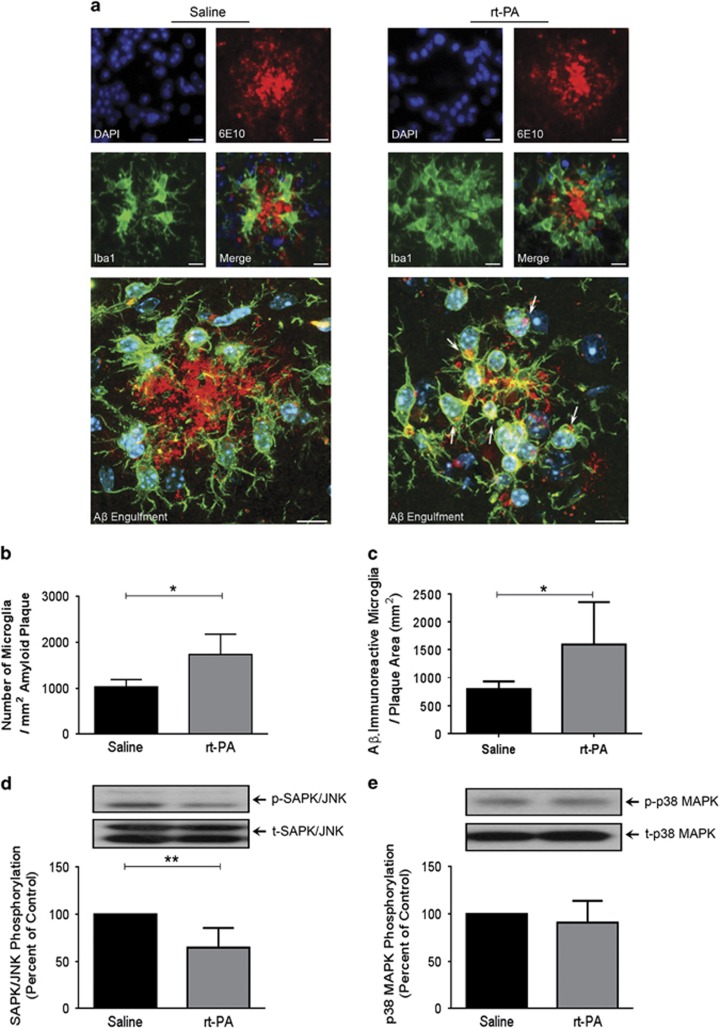Figure 3.
Chronic Activase rt-PA administration increases the number of resident microglia-associated to Aβ plaques and reduces the activation of stress-induced pathways. Immunofluorescence staining (a–c) and western blot (d and e) analyses examining microglia association to Aβ plaques, Aβ internalization by microglia, and the activation of stress-related kinases in the brain of APPswe/PS1 mice, 10 weeks after chronic systemic Activase rt-PA administration. Triple 6E10/ Iba1/DAPI immunofluorescence staining shows (a and b) an increased number of microglia (Iba1; green/DAPI; blue) surrounding Aβ plaques (6E10; red) and (a and c) an increased number of Aβ-immunoreactive resident microglia (microglia internalizing Aβ). Moreover, Activase rt-PA treatment (d) decreases the phosphorylation levels of SAPK/JNK (e) without affecting the phosphorylation levels of p38 MAPK. Optical densities were corrected with β-actin levels. Data are means±SEM (n=4–6 animals per group). Four sections representing the rostral, middle, and caudal levels of the hippocampus and overlaying cortex per animal's brain were used for immunofluorescence staining. *p<0.05, **p<0.01 compared with saline-treated group (standard two-tailed unpaired t-tests). Laser scan confocal images were acquired with a × 60 objective. Arrows indicate internalized Aβ microaggregates. Scale bar=10 μm.

